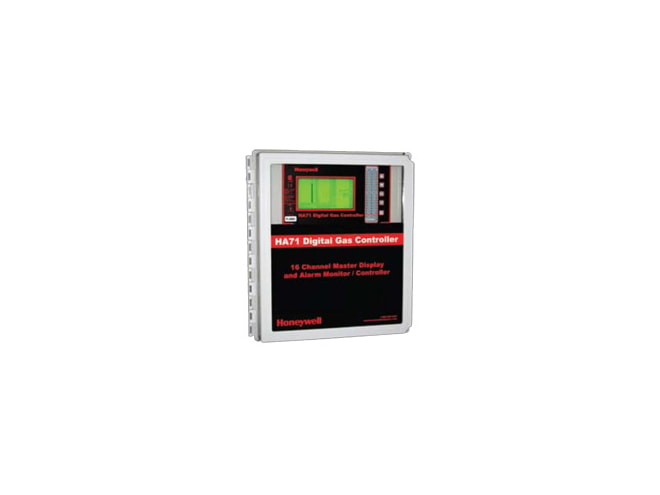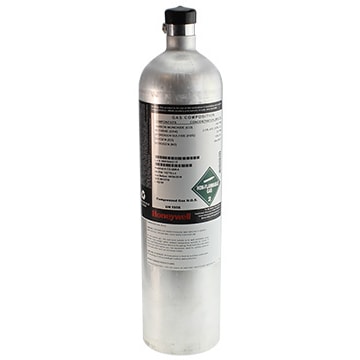
Manning Systems HA71 Gas Detector
Designed to provide simultaneous display and alarm functions for up to 16 input variables.

Overview
Features
- Accepts up to 16 inputs
- Analog or Modbus allowing data retrieval via RS-485
- 8 channel display mode
- Cal Mode offers pushbutton zero/span calibration
- Authorization Mode locks critical configuration variables
- Dual Modbus RS-485 serial ports
- 3 adjustable alarm levels per channel
- Call for custom configurations
Description
The Manning Systems by Honeywell HA71 Gas Detector has 16 Channels and is designed to provide simultaneous display and alarm functions for up to 16 input variables.
Call for custom configurations
The HA71 delivers added value through its multiple capabilities—with simultaneous display and alarm functions for up to 16 input variables. A graphic LCD displays monitored data as trends, bar graphs and engineering units. Three adjustable alarm levels are provided per channel. Relay outputs allow control of beacons, horns and other alarm events. A horn relay may be set for steady or pulsing operation.
Analog inputs may be accepted and conditioned via sensor specific analog input cards. Alternatively, the standard Modbus Master port allows input data to be retrieved from Modbus slave devices including the many Modbus compatible Honeywell Analytics sensor transmitter products.
The HA71 is easy to configure and user friendly. Measurement ranges in engineering units, adjustable alarm set-points, dual serial interfaces and many other features combine to allow the HA71 to satisfy the needs of many demanding applications. It is widely used for centralizing the display and alarm processing functions in critical multipoint monitoring applications. These include monitoring of ambient gas detection, rotating machinery, tank levels, flow, temperature and others. Nonvolatile memory retains all configuration data indefinitely. A RS-485 Modbus slave port allows up to 128 HA71's to be multidropped onto a single data highway for interrogation by another Modbus master. HA71's may also be cascaded by connecting one unit's master port to another's slave port.
HA71 options such as discrete alarm relays per channel, 4-20mA I/O, direct sensor input conditioning and others are added by connecting appropriate 8 channel boards (2 required for more than 8 channels) to the economical I2C expansion bus. Familiar "telephone style" cables and connectors interface to this bus. This method allows versatile system configuration of options satisfying the most unusual user applications.
The HA-71-HMI (Human Machine Interface) software (optional) has the ability to monitor up to ten HA71 controllers simultaneously, displaying up to 160 points of detection. It provides complete data display and storage, with real-time channel data available in 24-hour or 15-minute trends, including historical alarm and maintenance data.
Documents
Documents
- Manning Systems by Honeywell HA71 Gas Detector Datasheet PDF (488 KB)
- Manning Systems by Honeywell HA71 Gas Detector Quick Spec Sheet PDF (303 KB)
- Manning Systems by Honeywell HA71 Gas Detector Manual PDF (3.4 MB)
- Honeywell Bump Test and Calibration Frequency Guidelines PDF (70 KB)
- All possible part numbers
Need Help? Call a Temperature engineer at 1-800-884-4967
We're open 8:00 am to 5:00 pm ET







